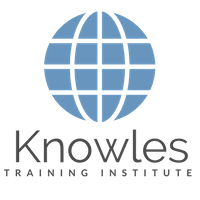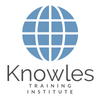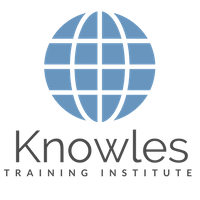Keynotes That Stick: A Conversation with Sancy Suraj
As a magazine that specializes in interviewing keynote speakers, we had the pleasure of speaking with Sancy Suraj, CEO of Knowles Training Institute, The Umonics Method and Pinnacle Minds, and a renowned memory athlete and trainer. With one world Guinness record for the longest color sequence memorized and six Singapore book of records, Sancy has a wealth of experience in memorization feats and has trained over 10,000 people worldwide. In addition to his impressive feats, Sancy is also an accomplished keynote speaker, delivering speeches that resonate with diverse audiences and leave a lasting impact.

What do you think sets a memorable keynote speech apart from one that falls flat?
As a keynote speaker, I believe that a memorable keynote speech sets itself apart from one that falls flat by connecting with the audience on a deeper level. A memorable speech is one that leaves a lasting impression on the audience and inspires them to take action. There are several factors that contribute to the success of a keynote speech, and each one plays a crucial role in creating a memorable experience for the audience.
Firstly, a memorable keynote speech needs to be relevant to the audience. The speaker needs to understand the needs, interests, and pain points of the audience and tailor the content to address these issues directly. When the audience feels that the speaker understands their perspective, they are more likely to engage with the content and retain the information presented.
Secondly, a memorable keynote speech needs to be engaging and dynamic. The speaker needs to use storytelling, humor, and other techniques to captivate the audience’s attention and keep them engaged throughout the talk. When the audience is engaged, they are more likely to remember the content presented and apply it in their personal and professional lives.
Finally, a memorable keynote speech needs to be authentic and genuine. The speaker needs to be true to themselves and share personal stories and experiences that connect with the audience on a human level. When the audience feels that the speaker is relatable and authentic, they are more likely to trust and connect with the content presented.
In summary, a memorable keynote speech sets itself apart from one that falls flat by connecting with the audience on a deeper level. By being relevant, engaging, and authentic, the speaker can create a lasting impact on the audience and inspire them to take action. As a keynote speaker, my goal is always to create a memorable experience for the audience by leveraging these key factors and delivering content that resonates with them.
How do you ensure that your keynote speeches resonate with diverse audiences?
As a keynote speaker, it is essential to ensure that my speeches resonate with diverse audiences. One of the most critical factors in achieving this is to have a deep understanding of the audience’s demographics, interests, and cultural backgrounds. With this understanding, I can tailor my speech to address their specific needs and ensure that the content resonates with them.
One of the ways I ensure that my keynote speeches resonate with diverse audiences is by incorporating universal themes that are relevant to everyone. For example, topics like personal growth, resilience, and leadership are universal themes that can be applied across different cultures and backgrounds. By focusing on these themes, I can create a message that speaks to everyone in the audience, regardless of their cultural or personal background.
Another way I ensure that my keynote speeches resonate with diverse audiences is by using stories and examples that are relatable to everyone. I strive to use stories and examples that are inclusive and that represent a variety of experiences and perspectives. This can help the audience connect with the content on a personal level and feel that the speech is speaking directly to them.
Finally, I ensure that my keynote speeches are delivered in a way that is respectful and sensitive to diverse audiences. This includes being mindful of cultural and religious sensitivities, using appropriate language, and avoiding stereotypes and assumptions. By creating a safe and inclusive environment, I can help ensure that the audience feels comfortable and engaged with the content presented.
In summary, ensuring that my keynote speeches resonate with diverse audiences is critical for me as a speaker. By understanding the audience’s demographics, interests, and cultural backgrounds, incorporating universal themes, using relatable stories and examples, and delivering the speech in a respectful and sensitive way, I can create a powerful and memorable experience for everyone in the audience.
How do you balance the need to inform and educate your audience with the need to entertain them?
As a keynote speaker, it’s essential to balance the need to inform and educate the audience with the need to entertain them. To achieve this balance, I believe that it’s crucial to approach the speech as an experience, rather than just a presentation of information. This means that while the audience should leave with valuable insights and takeaways, they should also enjoy the presentation and find it engaging and entertaining.
One way to balance the need to inform and educate with the need to entertain the audience is to use storytelling. People love stories, and when a speaker uses compelling stories to illustrate their points, it can help the audience retain the information presented. Incorporating humor, personal anecdotes, and unexpected twists can also keep the audience engaged and entertained.
Another way to achieve this balance is to use visual aids and interactive elements to break up the presentation and keep the audience engaged. This can include using videos, images, or slides to illustrate key points or having interactive elements such as polls or quizzes to keep the audience engaged and involved.
Finally, it’s essential to ensure that the content presented is relevant and valuable to the audience. While entertainment is important, the audience also expects to learn something new and useful from the speech. Therefore, it’s essential to strike a balance between informative and entertaining content that provides value to the audience.
In summary, balancing the need to inform and educate the audience with the need to entertain them is a critical aspect of keynote speaking. By using storytelling, visual aids, and interactive elements, and ensuring that the content is relevant and valuable to the audience, a speaker can create a memorable and engaging experience that informs, educates, and entertains.
“A successful keynote speech is not just about delivering information, but also creating a captivating experience that educates, entertains, and inspires the audience.”
Can you share an example of a keynote speech that you gave that had a significant impact on the audience?
I have had the privilege of delivering many keynote speeches that have had a significant impact on the audience. One of the speeches that stand out for me was a talk that I gave on resilience and mental toughness. The audience consisted of a group of professionals from a variety of industries, and I knew that many of them had faced significant challenges and setbacks in their careers.
To make the speech impactful, I shared personal stories of overcoming adversity, including how I developed my memory skills and set world records despite initial setbacks. I also used examples from sports and other industries to illustrate how resilience and mental toughness are critical to achieving success.
The response from the audience was incredible, and I received many messages afterward from attendees who were inspired by the speech. Many of them shared their own stories of overcoming adversity and how the speech had helped them reframe their challenges and develop a more resilient mindset.
One attendee even shared how the speech had a ripple effect in their workplace, inspiring their colleagues to approach challenges with a more positive and resilient mindset. This feedback was incredibly gratifying and reinforced the impact that a well-crafted keynote speech can have on an audience.
In summary, the keynote speech on resilience and mental toughness that I gave had a significant impact on the audience, inspiring them to approach challenges with a more positive and resilient mindset. By sharing personal stories, using relatable examples, and creating a safe and inclusive environment, I was able to deliver a message that resonated with the audience and left a lasting impression.
How do you incorporate storytelling into your keynote speeches, and what role does it play in engaging the audience?
Storytelling is an essential component of many successful keynote speeches, including mine. Incorporating compelling stories into a speech can help the audience connect with the speaker and the topic at an emotional level, making the presentation more engaging and memorable. Here’s how I incorporate storytelling into my speeches:
First, I start by identifying stories that are relevant to the topic and resonate with the audience. For example, if I’m delivering a keynote speech on leadership, I might tell a story about a great leader that I have encountered in my life, or I might share a story of a leader who overcame a significant challenge.
Second, I make sure that the stories I use are relatable and easy to understand. This means using language that is accessible to the audience and avoiding overly complex or technical terms that might confuse them.
Third, I use storytelling to illustrate key points and make them more memorable. For example, I might tell a story about a time when I failed to achieve a goal and what I learned from that experience to illustrate the importance of perseverance and resilience.
Finally, I make sure that the stories I use are authentic and genuine. This means sharing personal experiences or stories that I have witnessed firsthand rather than using stories that I have heard from someone else.
In summary, storytelling plays a critical role in engaging the audience and making keynote speeches more memorable. By using relevant and relatable stories, illustrating key points, and ensuring that the stories are authentic and genuine, I can connect with the audience on an emotional level and create a more impactful and engaging presentation.
“Stories have the power to unlock the imagination, ignite emotions, and inspire action. As a keynote speaker, it’s essential to harness the power of storytelling to engage and connect with your audience.”
In our conversation, we asked Sancy about the key ingredients that make a keynote speech memorable and impactful. According to Sancy, a successful keynote speech must be centered around providing value to the audience, delivering information, insights, or inspiration that they can use to improve their lives or work.
We also asked Sancy how he ensures that his speeches resonate with diverse audiences. Sancy stressed the importance of researching and understanding the audience beforehand and using storytelling to engage and inspire them.
During our conversation, we also asked Sancy about a specific keynote speech that had a significant impact on his audience. He shared a story about a speech he gave on the importance of self-belief and how it resonated with a young audience struggling with self-doubt.

In your experience, what are some common mistakes that keynote speakers make, and how can they be avoided?
Having seen many keynote speakers over the years, I have identified some common mistakes that speakers make that can detract from the effectiveness of their speeches. Here are a few examples of these mistakes and how to avoid them:
First, one common mistake is failing to connect with the audience. This can happen when the speaker doesn’t take the time to understand the audience’s needs and interests or doesn’t make an effort to build rapport with them. To avoid this mistake, I always take the time to research the audience beforehand and tailor my speech to their needs and interests.
Second, another common mistake is failing to engage the audience. This can happen when the speaker delivers a monotonous and uninspired speech that doesn’t capture the audience’s attention. To avoid this mistake, I try to incorporate interactive elements into my speeches, such as asking questions, using visual aids, and inviting the audience to participate.
Third, a common mistake is trying to cover too much ground in a single speech. This can lead to a lack of focus and coherence in the speech, and the audience may leave feeling overwhelmed or confused. To avoid this mistake, I make sure to identify a clear theme or message for each speech and structure the speech around that theme.
Finally, a common mistake is failing to practice and prepare adequately. This can lead to a lack of confidence and credibility during the speech and may cause the speaker to stumble over their words or forget important points. To avoid this mistake, I always practice my speeches multiple times and prepare thoroughly beforehand, including researching the topic, creating an outline, and developing visual aids if necessary.
In summary, common mistakes that keynote speakers make include failing to connect with the audience, failing to engage them, covering too much ground in a single speech, and failing to practice and prepare adequately. To avoid these mistakes, speakers should take the time to research and understand the audience, incorporate interactive elements into their speeches, focus on a clear theme or message, and practice and prepare thoroughly beforehand.
How do you adapt your keynote speeches to different types of events, such as conferences, seminars, or corporate retreats?
Adapting keynote speeches to different types of events is essential for a successful presentation. While the core message may remain the same, the delivery and content should be tailored to suit the specific event and audience. Here are some ways in which I adapt my keynote speeches to different types of events:
First, I research the event and audience beforehand. I take the time to understand the goals and objectives of the event, the demographic of the audience, and the format and schedule of the event. This helps me to tailor my message and delivery to suit the specific event and audience.
Second, I adjust the length and style of my presentation. For example, for a conference, I may need to deliver a shorter, more focused presentation that fits within a specific time slot. For a seminar or workshop, I may need to incorporate more interactive elements and allow more time for questions and discussion.
Third, I adapt the content of my presentation. I make sure to use examples and anecdotes that are relevant to the event and audience. For example, if I’m speaking at a corporate retreat, I may use examples from the company’s industry or history to illustrate my points.
Finally, I adjust my delivery to suit the event and audience. For example, if I’m speaking at a large conference, I may need to use a more dynamic and energetic delivery style to engage the audience. If I’m speaking at a smaller seminar or workshop, I may use a more conversational and interactive style.
In summary, adapting keynote speeches to different types of events requires research, flexibility, and a willingness to adjust content and delivery to suit the specific event and audience. By taking the time to understand the event and audience, adjusting the length and style of the presentation, adapting the content, and adjusting delivery, speakers can ensure that their presentations are engaging, relevant, and impactful.
Can you discuss any specific techniques or strategies you use to make your keynote speeches memorable and impactful?
As a keynote speaker, my goal is to make my presentations not only informative but also memorable and impactful. Here are some specific techniques and strategies I use to achieve this:
Firstly, I use storytelling to engage the audience and make my presentations more relatable. I share personal anecdotes or use real-life examples to illustrate my points and make them more memorable.
Secondly, I use humor to break the ice and create a more relaxed atmosphere. A well-timed joke or humorous anecdote can not only entertain the audience but also make my message more relatable and memorable.
Thirdly, I use visual aids to enhance my presentations. I use slides or videos to complement my message and make it more engaging. This can also help to reinforce key points and make them more memorable.
Fourthly, I use interactive elements to engage the audience and encourage participation. This can include asking questions, facilitating discussions, or using polls or quizzes to keep the audience engaged and focused.
Finally, I use repetition to reinforce key messages and make them more memorable. I make sure to repeat key points throughout my presentation and reinforce them with real-life examples or anecdotes.
In conclusion, using storytelling, humor, visual aids, interactive elements, and repetition are all effective techniques for making keynote speeches more memorable and impactful. By using these strategies, I can engage the audience and make my presentations more relatable and relevant, leaving a lasting impression that resonates long after the event has ended.
How do you handle unexpected challenges or disruptions during a keynote speech, such as technical issues or difficult audience members?
As a keynote speaker, I have encountered unexpected challenges and disruptions during my presentations, such as technical issues or difficult audience members. Here are some strategies I use to handle these situations:
Firstly, I always prepare for the unexpected. I arrive early to the venue to test the equipment and ensure that everything is working properly. I also have a backup plan in case of technical issues, such as having a printed copy of my presentation or bringing my own equipment.
Secondly, I remain calm and composed in the face of unexpected challenges. I acknowledge the issue and address it with the audience, explaining what is happening and what steps are being taken to resolve the issue.
Thirdly, I try to involve the audience in finding a solution to the problem. For example, if there is a technical issue, I might ask for volunteers from the audience to help troubleshoot the problem.
Fourthly, I adapt to the situation as needed. If a disruptive audience member is causing a distraction, I might pause my presentation and address the individual directly, asking them to stop their disruptive behavior.
Finally, I stay focused on my message and goals for the presentation, even in the face of unexpected challenges. I try to maintain a positive attitude and keep the audience engaged, even if there are disruptions or distractions.
In conclusion, handling unexpected challenges and disruptions during a keynote speech requires preparation, composure, adaptability, and a focus on the goals of the presentation. By remaining calm and engaging the audience in finding solutions to problems, I can ensure that my presentations remain impactful and effective, even in the face of unexpected challenges.
Finally, what advice would you give to aspiring keynote speakers who want to create keynotes that truly stick with their audiences?
For aspiring keynote speakers who want to create presentations that truly stick with their audiences, I would offer the following advice:
Firstly, focus on providing value to your audience. Your presentation should offer insights, information, or inspiration that your audience can use to improve their lives, their work, or their organizations. By focusing on the needs and interests of your audience, you can create a presentation that resonates with them and has a lasting impact.
Secondly, be authentic and genuine in your delivery. Audiences can tell when a speaker is not being true to themselves or is simply going through the motions. By speaking from the heart and sharing personal stories or experiences, you can create a deeper connection with your audience and make your presentation more memorable.
Thirdly, use storytelling to engage and inspire your audience. People remember stories much more than they remember facts or figures, so incorporating relevant and compelling stories into your presentation can help your message stick with your audience.
Fourthly, practice, practice, practice. Delivering a powerful keynote presentation takes practice and preparation. Rehearse your presentation multiple times, and seek feedback from trusted colleagues or mentors. By honing your delivery and refining your message, you can create a presentation that truly resonates with your audience.
Finally, don’t be afraid to take risks and try new things. The most memorable keynote presentations are often those that push boundaries or challenge conventional thinking. By taking calculated risks and experimenting with new ideas or formats, you can create a presentation that truly stands out and sticks with your audience.
In conclusion, creating a keynote presentation that truly sticks with your audience requires a focus on value, authenticity, storytelling, practice, and innovation. By following these principles and putting in the necessary time and effort, aspiring keynote speakers can create presentations that have a lasting impact on their audiences.
“Creating a keynote presentation that truly sticks with your audience is like crafting a masterpiece. It requires a blend of value, authenticity, storytelling, practice, and innovation, all working together in harmony to create an unforgettable experience.”
In conclusion, Sancy Suraj is a keynote speaker with a wealth of experience and a unique perspective on the art of delivering impactful speeches. His insights on the importance of value, authenticity, storytelling, and practice are valuable lessons for aspiring keynote speakers looking to make a lasting impact on their audiences. We look forward to hearing more from Sancy in the future and continuing to learn from his expertise.



